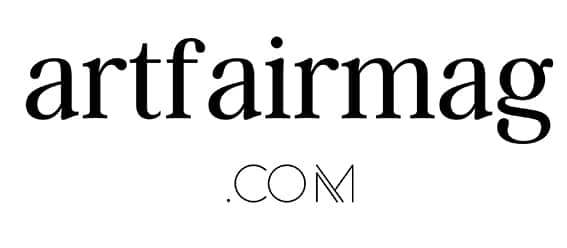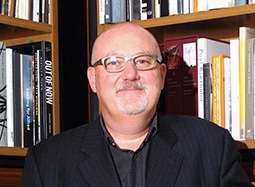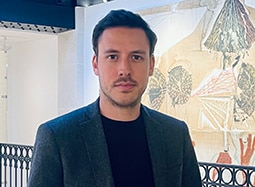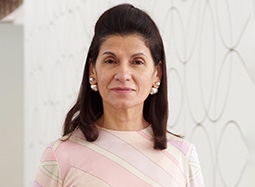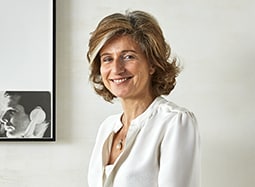Nathalie Obadia
Since its first launch in 1993 on rue de Normandie in the Marais district, the Galerie Obadia has moved several times to finally settle in a 500m2 space on rue du Cloître Saint-Merri. In 2008, it extended its influence by opening a gallery in Brussels and in September 2021, a new space was opened in Paris, in the Matignon-Saint-Honoré district. Its founder, Nathalie Obadia, is committed to promoting young talent – such as Guillaume Bresson, Nú Barreto and Jérôme Zonder – alongside established artists such as Mickalene Thomas and Laure Prouvost. For many years, the gallery has also participated in the rediscovery of artists who have disappeared, such as Martin Barré, Josep Grau-Garriga, or Seydou Keita. The gallery usually organises about fifteen exhibitions per year, mainly monographic. For example, the last three exhibitions pay tribute to the work of Laura Henno, Shapour Pouyan and Mickalene Thomas.
Nathalie Obadia
Since its first launch in 1993 on rue de Normandie in the Marais district, the Galerie Obadia has moved several times to finally settle in a 500m2 space on rue du Cloître Saint-Merri. In 2008, it extended its influence by opening a gallery in Brussels and in September 2021, a new space was opened in Paris, in the Matignon-Saint-Honoré district. Its founder, Nathalie Obadia, is committed to promoting young talent – such as Guillaume Bresson, Nú Barreto and Jérôme Zonder – alongside established artists such as Mickalene Thomas and Laure Prouvost. For many years, the gallery has also participated in the rediscovery of artists who have disappeared, such as Martin Barré, Josep Grau-Garriga, or Seydou Keita. The gallery usually organises about fifteen exhibitions per year, mainly monographic. For example, the last three exhibitions pay tribute to the work of Laura Henno, Shapour Pouyan and Mickalene Thomas.
Contemporary Art
3, rue du Cloître Saint-Merri
75004 Paris, FR
+33 (0) 1 42 74 67 68
91, rue du Faubourg Saint-Honoré
75008 Paris, FR
+33 (0)1 53 01 99 76
8, rue Charles Decoster
1050 Ixelles, Brussels
+32 (0) 2 648 14 05
All our Interviews
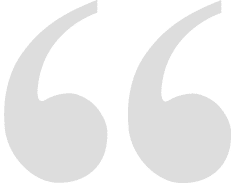
Read all our exclusive interviews with antique, modern, contemporary & primitive art dealers.
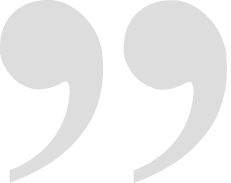
Interview with Nathalie Obadia ~ Founder
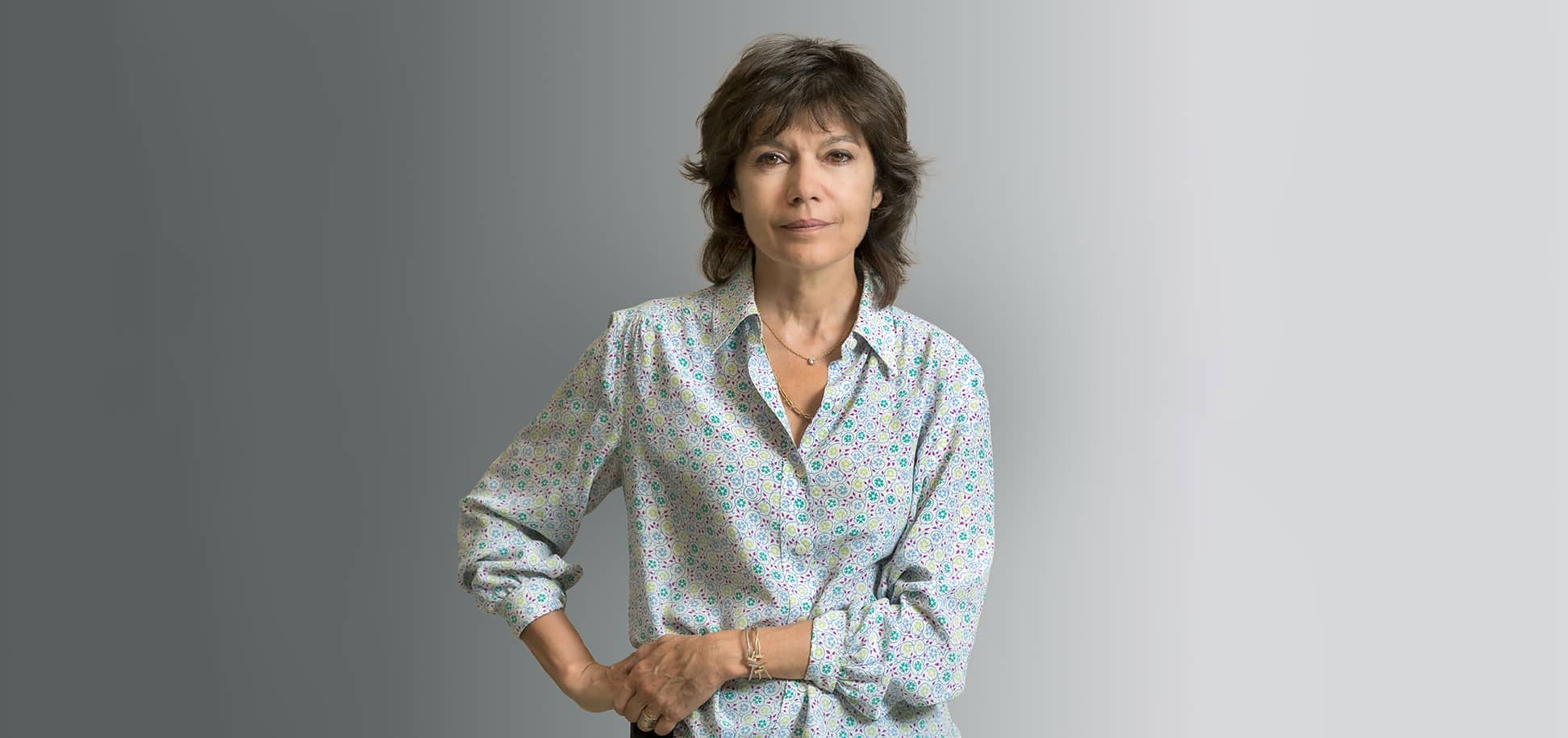
Portrait de Nathalie Obadia, 2021 © Luc Castel. Courtesy de la Galerie Nathalie Obadia Paris / Bruxelles
Interview by Pauline Loeb-Obrenan, founder of artfairmag.
Born and raised in a family of collectors, Nathalie Obadia knew from an early age that she would work in the art world. After working with several important figures in the art market – such as Daniel Templon from 1988 to 1992 – she opened her eponymous gallery in 1993. As a gallery owner – more than just an art dealer as she likes to say – Nathalie Obadia sees herself as a bridge between her artists and collectors, museum directors, art critics…
artfairmag: Nathalie Obadia, I believe you have always been surrounded by art. In less than thirty years, you have built up what might be called a mega-gallery. Can you tell us how did you come this far?
Nathalie Obadia: I was lucky to live in a family of collectors and more importantly of parents who were intellectually curious about everything that was happening in the cultural field: literature, cinema, art. So, from the middle of the 70’s, I visited European museums like the Ludwig in Aachen, the Stedjeleik in Amsterdam, these museums showed the American Pop Art that my parents started collecting at the first FIAC in 1973. They bought a Wesselman from Daniel Varenne and then continued with Warhol and Liechtenstein from Sonnabend who still had his gallery in Paris. Then I got into the habit of visiting art galleries and museums in Paris very regularly from the age of 14. Since that age, I knew that it would be my profession.
artfairmag: As an art dealer, you promote not only established artists such as Laure Prouvost and Mickalene Thomas, but also emerging talents like Nú Barreto or Shapour Pouyan and you work hard on the rediscovery of deceased artists like Martin Barré, Seydou Keita and Shirley Jaffe. How do you express these different aspects of your work? Is there one that is particularly important to you?
N. O.: I am a gallery owner and not only an art dealer – so I like to take risks by promoting young artists like Antoine Renard, Guillaume Bresson or Jérôme Zonder. I exhibited Rina Banerjee in France since 2005, when she was completely unknown, and it is our gallery that has done all the work of international promotion for over 15 years. For artists like Martin Barré who was recognized by institutions but absent from the art market, we built up his market and his international recognition from 2006, especially in the USA where he entered influential private collections. We also sold a painting to the Art Institute of Chicago, I was very proud of this acquisition as it was a tribute to all the work undertaken by the gallery in close collaboration and with the full confidence of the Estate.
artfairmag:Talking about the artists you represent, you accompany them in numerous institutional exhibitions around the world. For example, Sarkis at the Turkish Pavilion at the 56th Venice Biennale, Laure Prouvost at the Palais de Tokyo, Paris or Valérie Belin during a tour of solo exhibitions in Beijing, Shanghai and Chengdu. Do you think that working hand in hand with cultural institutions is an integral part of being a gallerist?
N. O.: The gallery is very concerned with institutional work and it is very important to accompany artists in its projects. We have a very strong team at the gallery that knows how to work with institutions that are in the “long run” so it is necessary to be patient and build privileged relationships with museum directors and curators. Private collectors are very proud to know that the artists they appreciate and buy are exhibited and bought by museums.
artfairmag: You opened your eponymous gallery in 1993, at a time when Paris was far behind the hubs of London, New York and even Berlin. How has the Paris market evolved since then? Who are your clients today?
N. O.: Today all the artists from all over the world want to exhibit in Paris and I would say that it is even a priority compared to Berlin or London which was not the case in 1993 when I opened the gallery. Paris was not considered a strategic and necessary place by an American, German or English artist. They would choose not to exhibit there and often if they did, the exhibitions were not of high quality because Paris was seen as a secondary place. Paris suffered from the beginning of the 60’s because there were no big recognized collectors of avant-garde art like Ludwig in Germany, Panza di Biumo in Italy, not to mention the Americans. Today, thanks to the two driving forces of Bernard Arnault and François Pinault, France has once again become an essential part of the art market and there are many new French collectors in their 40s and 50s who are building up beautiful and solid collections of French and international art. You only have to look at the number of foreign galleries that are setting up shop in Paris to see the proof and the sales of Christie’s and Sotheby’s, both of which are owned by French people, are more and more ambitious.
“I am a gallery owner and not only an art dealer – so I like to take risks by promoting young artists.”
artfairmag: Before the health crisis, you used to reach out to international collectors by participating in many art fairs – 10 to 12 a year. Has this long hiatus made you reconsider the importance of fairs in your business model? Has this time without fairs brought out other sales channels?
N. O.: Without a doubt online sales via social networks and specialized websites will remain and even increase especially since countries like China are totally closed. But the success of Art Basel and Fiac and the attendance of the galleries prove that the pattern of human relations and exchange around a work of art remains unchanged and primordial. Fortunately, I love doing fairs, it is a unique and irreplaceable place of exchange, even if it needs to be adapted and in the years to come there will be two circles of fairs: the very large global ones and what I call the specialized fairs with a particular theme such as I:54 and African art, or those that will be more local, but which are essential to reach another public in the area, such as Art Geneva and Art Brussels. I think that the amateurs will travel less in all directions.
artfairmag: Nathalie Obadia, in addition to running a highly regarded gallery, you teach at Science Po Paris and have written a book on the geopolitics of contemporary art. Does being a woman give a particular flavour to your success? How do you see the place of women in the art market?
N. O.: I have never considered being a woman as a particularity, my mother and my two grandmothers have always worked and were independent. But it is true that I am more attentive to my female employees than to other male colleagues when it comes to dealing with family commitments.Perhaps this is one of the reasons why my team is known for its efficiency, because they know how to balance work and personal life. I think this is crucial in a very competitive art world where you have to be everywhere. As for teaching at SciencesPo of which I am a graduate, it is a great pleasure each year to meet French and foreign students to whom I can transmit my passion and especially explain that the mission of a gallery is to be at the center of artistic and geopolitical issues. Despite the globalization of the market, running a contemporary art gallery in Paris in 2021 means something. I could have given up 25 years ago and thought that New York or Berlin were easier. I didn’t because I always thought that there was enough to build a beautiful project in Paris. I think I was right when we see the dynamism of Paris today.
artfairmag: Finally, could you present us an artwork you love, telling why it is special to you?
N. O.: It’s difficult because we evolve, we have different sensitivities with the eyes that change and the experiences of life that we accumulate. What I don’t like is a work made for the market and to please the fashionable trends.
More Interviews
Sean Kelly
Sean Kelly Gallery represents well established, mid-career and talented emerging artists, who challenge the traditional boundaries of art practice.
Galerie Templon
In 2013, Galerie Templon opened an additional space in Brussels. Mathieu Templon, Daniel’s son, has been running it with brio since 2015.
Galerie Max Hetzler
Founded in 1974, Galerie Max Hetzler focuses on well-established contemporary artists as well as emerging talent. With 5 locations in Europe, its influence is global.
Lévy Gorvy
Co-founded in 2017 by art dealers Dominique Lévy and Brett Gorvy, Lévy-Gorvy has become on of the most highly regarded contemporary art galleries.
